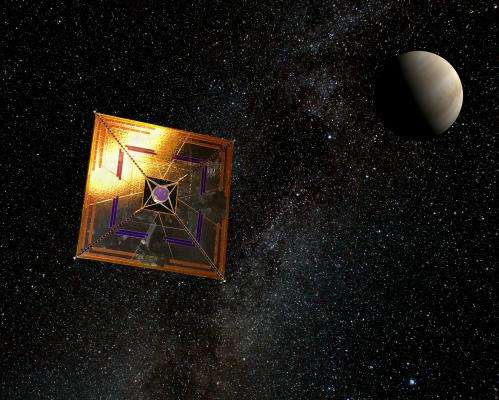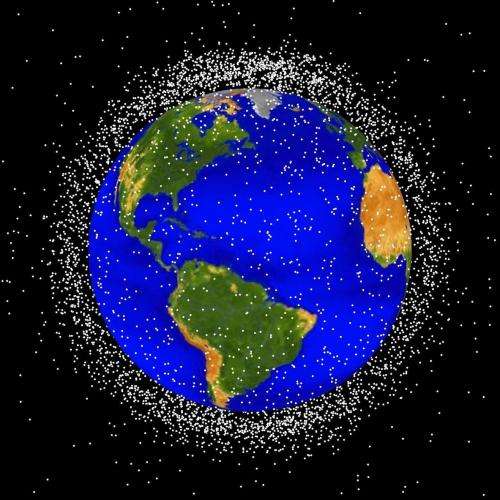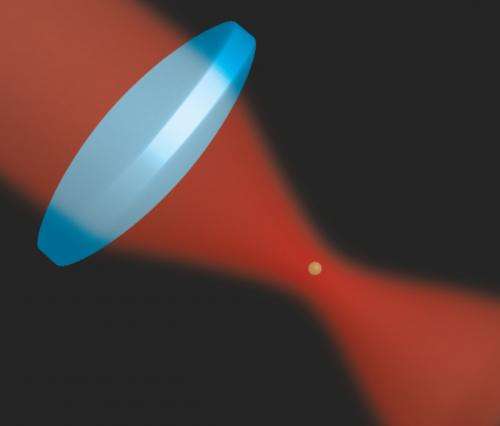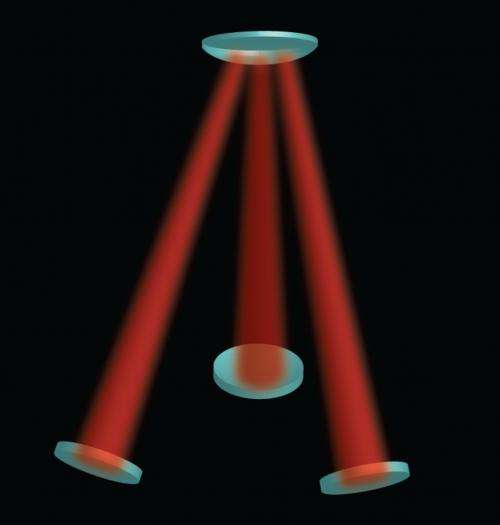Levitation just part of the power of pushy light

Most of the time we take light for granted. It arrives with the sunrise everyday and we turn it on with a flick of a switch every night. It appears to be ephemeral and benign to us humans but there is more to light than meets the eye.
It's been known since the late 1800s that light can be used to push things around through due to a force known as "radiation pressure". This force, though small, can be used to send ships to the stars, save satellites in Earth's orbit, build very small tweezers and probe the limits of quantum theory.
The burden of light
Light does not just illuminate. Every time it is absorbed or reflected, it exerts a force.
Imagine standing in a shower of ping-pong balls. Each time a ball bounces off your head you feel a small force as the ball is deflected by you. Similarly, if you stand outside on a sunny day, particles of light (photons) are bouncing off your head and each one of these exerts a very small force.
Doing the maths, the total extra weight on your head due to the sunshine at midday is about the same as one-hundredth of a single head louse. Solar radiation pressure is not going to give you a headache.
Sailing to the stars
What possible use does such a tiny force have?
Although small, it is always there, especially if you are in space. So if you use a large sail to reflect the sunlight, and wait long enough, the impact of radiation pressure is enough to power interplanetary spacecraft.
Solar sailing, as it is known, is not new, but it was the Japanese space program that was the first to really demonstrate it in 2010 with their IKAROS mission.
This sail had an area of about 200m2 which provided enough thrust to accelerate the 300kg probe to 100km/h in about 90 days.
Later this year, NASA will be launching its own deep-space solar sail mission, Sunjammer, with a 1,200m2 sail.
Shifting space junk
Closer to home, both the entertainment industry and satellite companies have been thinking about the amount of space junk in Earth's orbit.
Last year's movie Gravity depicted the catastrophic consequences of a collision between a space station and debris in Earth's orbit. The probability of such a collision has increased in recent years as the amount of junk has grown.
One possible solution, soon to be put to the test by an Australian research consortium, is to use high-power lasers to change the orbit of space junk.
Using ground-based telescopes the lasers will be aimed at a problematic piece of debris. The velocity of the debris will only be changed minutely, but a small change in direction can still be enough to shift the orbit and prevent a collision with a valuable satellite.
Optical tweezers
Space based applications rely on using small forces for long periods of time to get a large effect. If you want to see radiation pressure act more quickly, then you need to shine light at small things.
Optical tweezers use focused beams of laser light to trap and manipulate micron-sized things such as single cells.
They have proven to be especially useful in microbiology experiments. For example, you can use them to insert strands of DNA into living cells.
Because they just use light, it avoids the need and extreme difficulty of building physical probes small enough to do these kinds of manipulations.
What is this? A hoverboard for ants?
The objects being pushed around by standard optical tweezers are smaller than you can comfortably see with the naked eye. So what would it take to move or even float larger, visible object using laser light?
The obvious answer is more light. Recent research has shown that it is actually feasible to levitate a milligram-sized mirror (weighing roughly the same as a small house ant) just by shining lasers at it from below.
There are two key tricks that allow this to work:
- recycle the photons of light so that each each one reflects from the mirror thousands of times before it is lost. That way you don't have to use such a powerful laser
- make the levitation stable, which is why you need three laser beams arranged in a tripod underneath the mirror.
The levitation will be extremely sensitive to the position of the mirror. So if an ant were using it as a hoverboard, it would have to stay very, very still.
The mirror must also stay in the one spot above the laser beams, otherwise it will fall, thus further reducing its appeal for anty amusement.

The potential for levitation
Optical levitation does have genuinely interesting applications. To start with the only thing holding up the mirror against gravity is the laser light.
So if you know how much light you have, then you can very accurately measure the force due to gravity. This could be developed into an all-optical tool for gravity-based exploration and environmental sensing.
A second application is to explore the very edge of known physics. The two greatest theories in physics – quantum mechanics and general relativity – are incompatible, yet so far neither has been proved incorrect.
A key problem with solving this conundrum is that experiments tend to look at one theory or the other. Quantum mechanics deals with very small things, while relativity deals with the very large.

Finding a system where both theories play an important role has, until recently, been impossible.
Imagine that you could give the levitating mirror a very gentle push. It will start to wobble, just like a pendulum. But since the mirror is floating on frictionless laser light, there is almost nothing to slow the mirror down.
This allows you to observe the wobbling motion for a long time and thus measure the frequency of the oscillation with extreme precision.

One theory that seeks to combine relativity and quantum theory predicts a unique frequency signature in the motion of the mirror. Observing this signature would prove the theory correct.
Experiments, like this one, that probe the interface between optics, quantum theory and motion define a genre of physics known as "quantum-optomechanics".
As new and better experiments come online over the next few years, it is likely that tiny objects being pushed around by light will be testing some big ideas.
Provided by The Conversation
This story is published courtesy of The Conversation (under Creative Commons-Attribution/No derivatives).
![]()





















